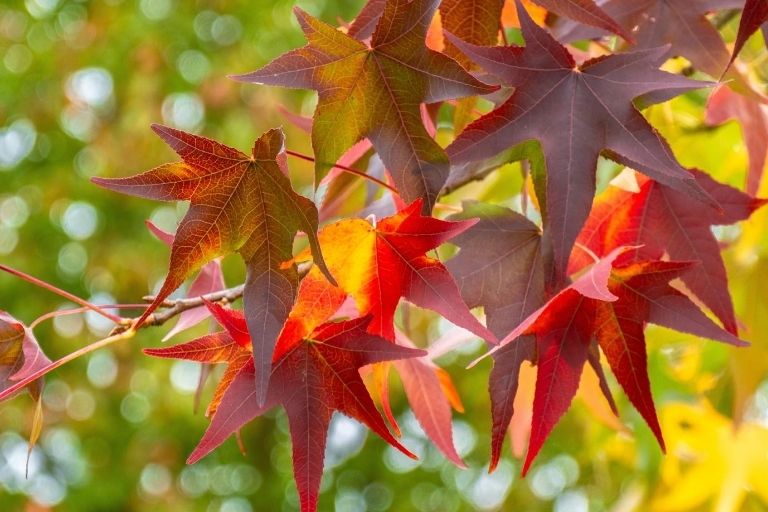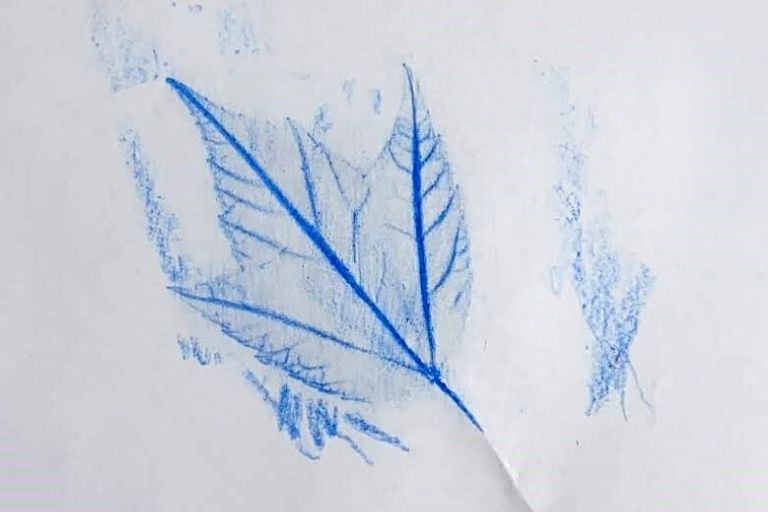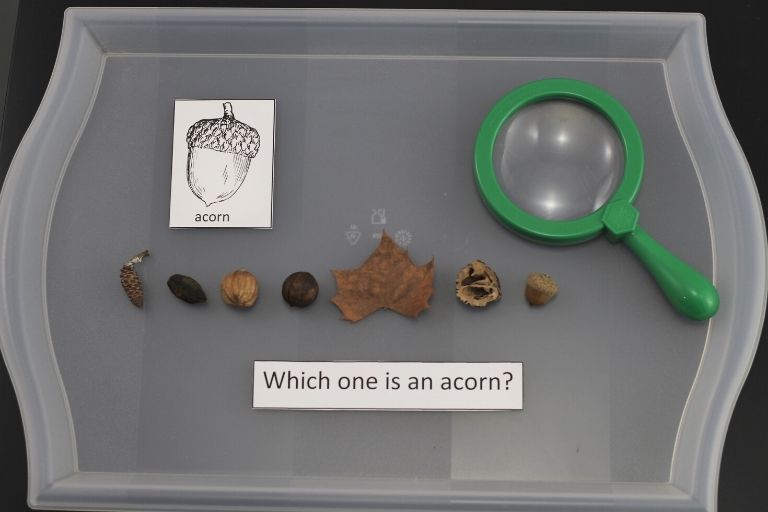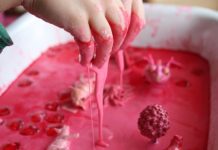Welcome in the season with these fall science activities!
Fall is my favorite time of the year – the leaves are changing colors, and the weather is awesome for being outside. There are many great science activities that are perfect for fall. Today I’m sharing three super simple fall science activities with you.
Hunt for Nature Treasures
Fall is the best time of year to go hunting for nature treasures. Leaves, pinecones, acorns, and other nuts are just waiting to be found on the ground. Go on a nature walk to collect some of these items.

When collecting seeds or nuts, be mindful of where you are collecting. Are there plenty of seeds or nuts available for the wildlife in the area? If so, taking a handful is fine. If you only find a few of something, try to limit the amount you take home. Be aware of any collection rules for the area you are visiting.
Once home, you can have fun making observations about your treasures. What kind of leaves did you find? Check out the Missouri Department of Conservation’s field guide to help identify your leaves.
Make Leaf Rubbings
Leaf rubbings are a fun way to record what leaves you find on your nature hunt. Place a leaf under a piece of paper. Peel the paper off of a crayon and lay the crayon on its side. Gently rub the crayon over the leaf. Young children may need help holding their paper on top of the leaf.

Leaf rubbings allow you to observe the veins of the leaves. Talk to your child about their function. The veins provide structure and support for the leaves. They transport water, food, and minerals throughout the leaf.
You can make a book with all of your leaf rubbings to save for later. If you want your leaves to last, you can try one of these methods for preserving leaves.
I also love this idea for drawing on the leaves to create leaf art. It’s perfect for preschool and elementary age.
Set Up a Discovery Table
Discovery tables can focus on just one thing like our pumpkin discovery table. Use pumpkins of different sizes and allow your child to examine and explore.
Set out science tools like scales, magnifying glasses, and rulers for them to use. You’ll want to teach your child how to use each science tool and then let them explore freely. Show them where to start the ruler and how to find the number on the ruler to determine the object’s length. Model how to use a scale or balance and explain how to tell which item is heavier. Encourage your child to line up the items in order by weight or length.
Apples would be another example of a single item type to explore. Select a few different kinds of apples. You can add a tasting element to your apple investigation. Ask your child to describe the flavor of each apple. Which kind of apple tastes the sweetest? Which is your favorite apple?
Use your nature treasures to inspire your discovery table. You can set up your discovery table with a small collection of items. Use different types of nuts or seeds, for example. Or set out one of each of the things you collected on your nature walk. In our acorn discovery table, we focused on acorns. However, I set out seven different nature objects and asked which one was an acorn. Then, we worked on counting and measuring skills using the acorns.

Discovery tables are great for a variety of age groups. It’s important to let your child make observations and explore the nature items. Encourage them to use their five senses (taste only if allowed) and ask you about them. You can help them learn more about the items through books or additional resources you provide.










